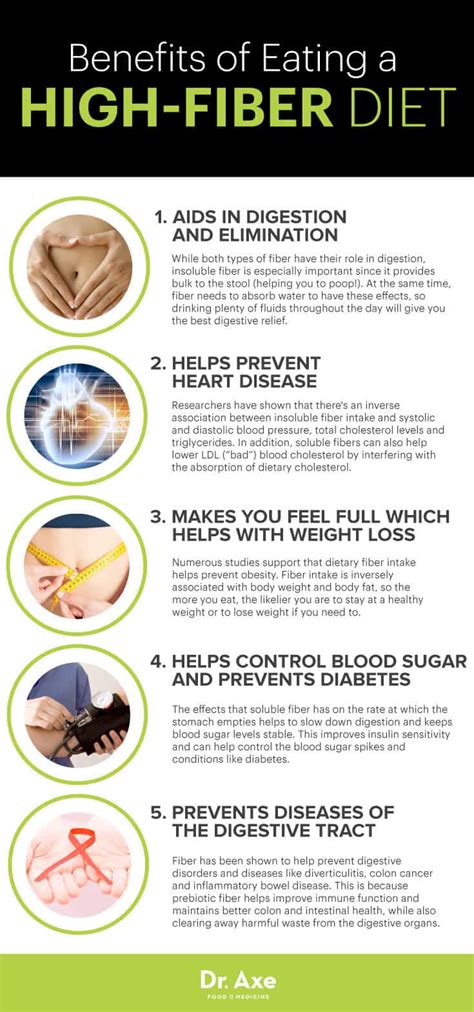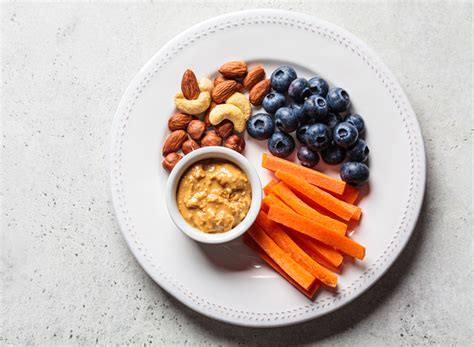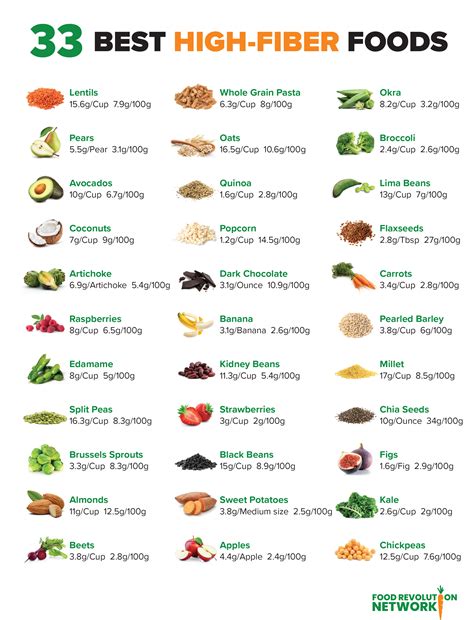Intro
Boost digestion with 5 high fiber snacks, including fruits, nuts, and whole grain treats, rich in soluble and insoluble fiber, perfect for healthy eating and weight management, supporting digestive health and satiety.
Eating a diet rich in fiber has numerous health benefits, including promoting digestive health, supporting healthy blood sugar levels, and even aiding in weight management. Despite these benefits, many people struggle to get enough fiber in their daily diet. The recommended daily intake of fiber is 25-30 grams per day, but the average person consumes only about 15 grams. One way to boost your fiber intake is by incorporating high-fiber snacks into your diet.
Incorporating high-fiber snacks into your daily routine can be easy and delicious. From fruits and vegetables to whole grains and legumes, there are many tasty and convenient options to choose from. High-fiber snacks can help curb hunger and provide a feeling of fullness, making them a great option for those looking to manage their weight. Additionally, high-fiber snacks can provide a much-needed energy boost, as fiber helps to slow down the digestion of sugar and prevent spikes in blood sugar levels.
High-fiber snacks can also have a positive impact on overall health and wellbeing. A diet rich in fiber has been shown to reduce the risk of chronic diseases such as heart disease, type 2 diabetes, and certain types of cancer. Furthermore, high-fiber snacks can help promote healthy gut bacteria, which is essential for a strong immune system. With so many benefits, it's no wonder why high-fiber snacks are becoming increasingly popular.
Benefits of High Fiber Snacks

Types of High Fiber Snacks
There are many types of high-fiber snacks to choose from, including fruits, vegetables, whole grains, and legumes. Some examples of high-fiber snacks include: * Fresh fruit such as apples, bananas, and berries * Raw or roasted vegetables such as carrots, broccoli, and Brussels sprouts * Whole grain crackers or bread with avocado or peanut butter * Legumes such as chickpeas, black beans, or lentils * Nuts and seeds such as almonds, pumpkin seeds, or chia seedsHigh Fiber Snack Options

Tips for Incorporating High Fiber Snacks
Incorporating high-fiber snacks into your daily routine can be easy and delicious. Here are some tips for getting started: * Start small: Begin by adding one or two high-fiber snacks to your daily routine and gradually increase the amount as you become more comfortable. * Experiment with different options: Try a variety of high-fiber snacks to find what works best for you. * Make it convenient: Keep high-fiber snacks on hand, such as in your desk or bag, to make it easy to grab a quick snack. * Be mindful of portion sizes: While high-fiber snacks are healthy, it's still important to be mindful of portion sizes to avoid overeating.Common High Fiber Snack Mistakes

High Fiber Snack Recipes
Here are some delicious and easy-to-make high-fiber snack recipes: * Roasted chickpeas: Rinse and dry 1 can chickpeas, toss with 2 tbsp olive oil and your choice of spices, and roast at 400°F for 30-40 minutes. * Energy balls: Mix 2 cups rolled oats, 1 cup dried fruit, 1/2 cup nut butter, and 1/4 cup honey. Roll into balls and refrigerate for at least 30 minutes. * Trail mix: Mix 1/2 cup nuts, 1/2 cup dried fruit, 1/4 cup seeds, and 1/4 cup dark chocolate chips.Conclusion and Next Steps

Final Thoughts
In conclusion, high-fiber snacks are a delicious and easy way to boost your fiber intake and promote overall health and wellbeing. By following the tips and recipes outlined in this article, you can make high-fiber snacks a part of your daily routine. Remember to be patient, stay consistent, and don't be afraid to try new things. With a little practice and experimentation, you can make high-fiber snacks a healthy and enjoyable part of your lifestyle.What are the benefits of high-fiber snacks?
+High-fiber snacks can help promote digestive health, support healthy blood sugar levels, aid in weight management, and reduce the risk of chronic diseases.
What are some examples of high-fiber snacks?
+Examples of high-fiber snacks include fresh fruit, raw or roasted vegetables, whole grain crackers or bread with avocado or peanut butter, legumes, and nuts and seeds.
How can I incorporate high-fiber snacks into my daily routine?
+Start by adding one or two high-fiber snacks to your daily routine and gradually increase the amount as you become more comfortable. Experiment with different options, make it convenient, and be mindful of portion sizes.
What are some common mistakes to avoid when eating high-fiber snacks?
+Common mistakes include not drinking enough water, eating too much fiber too quickly, and not choosing whole foods. Gradually increase your fiber intake, choose whole foods, and drink plenty of water to avoid these mistakes.
Can I make my own high-fiber snacks at home?
+Yes, you can make your own high-fiber snacks at home. Try making roasted chickpeas, energy balls, or trail mix using whole ingredients and being mindful of portion sizes.
